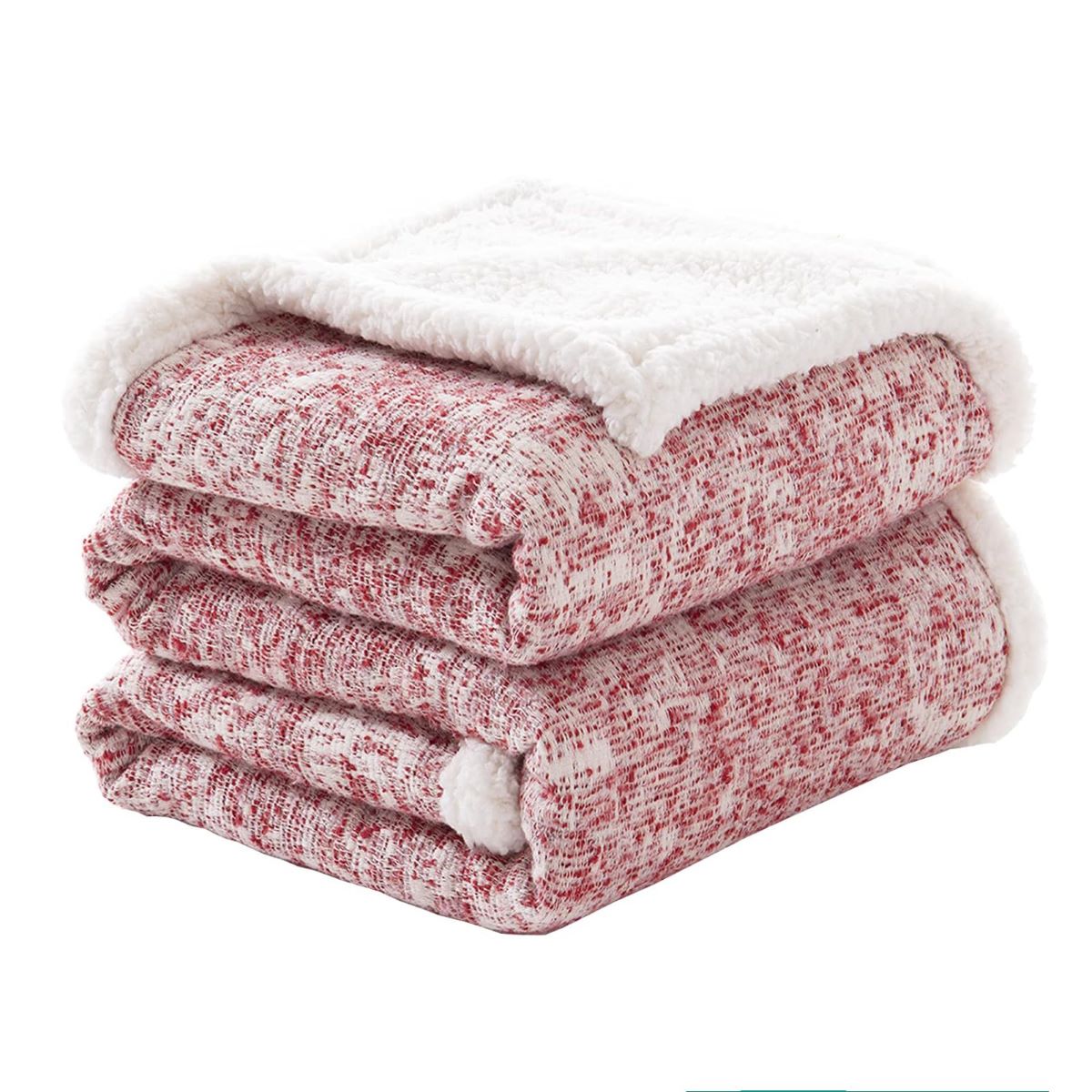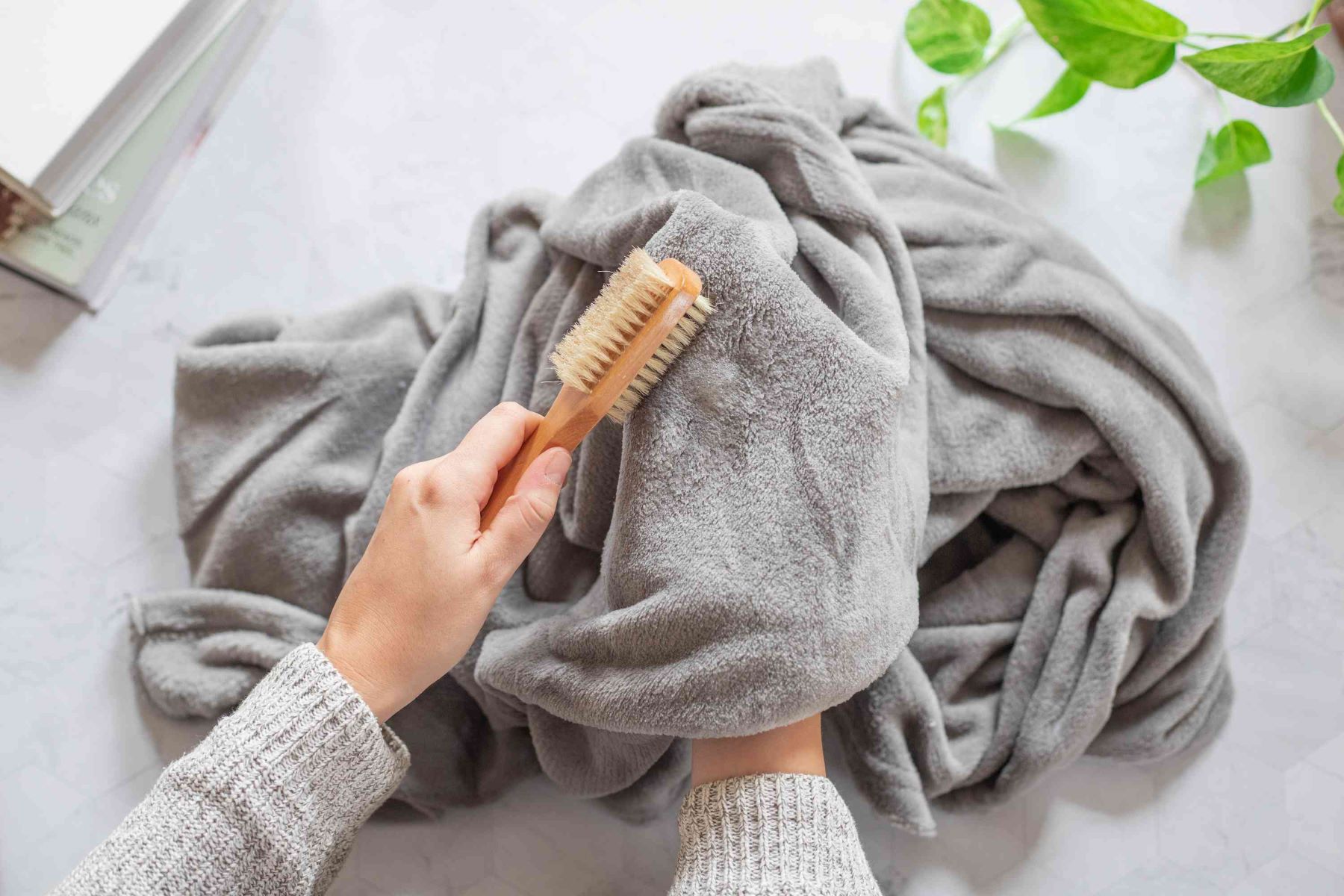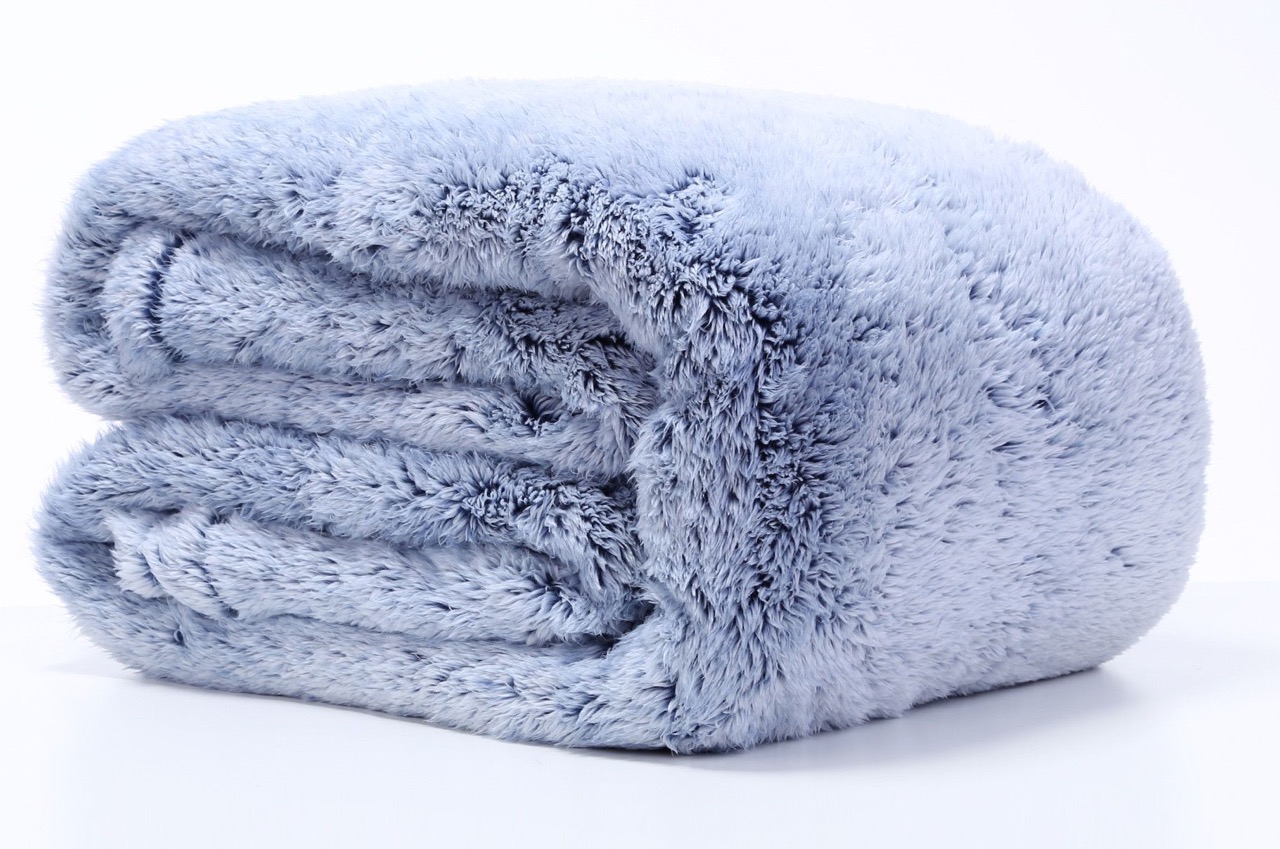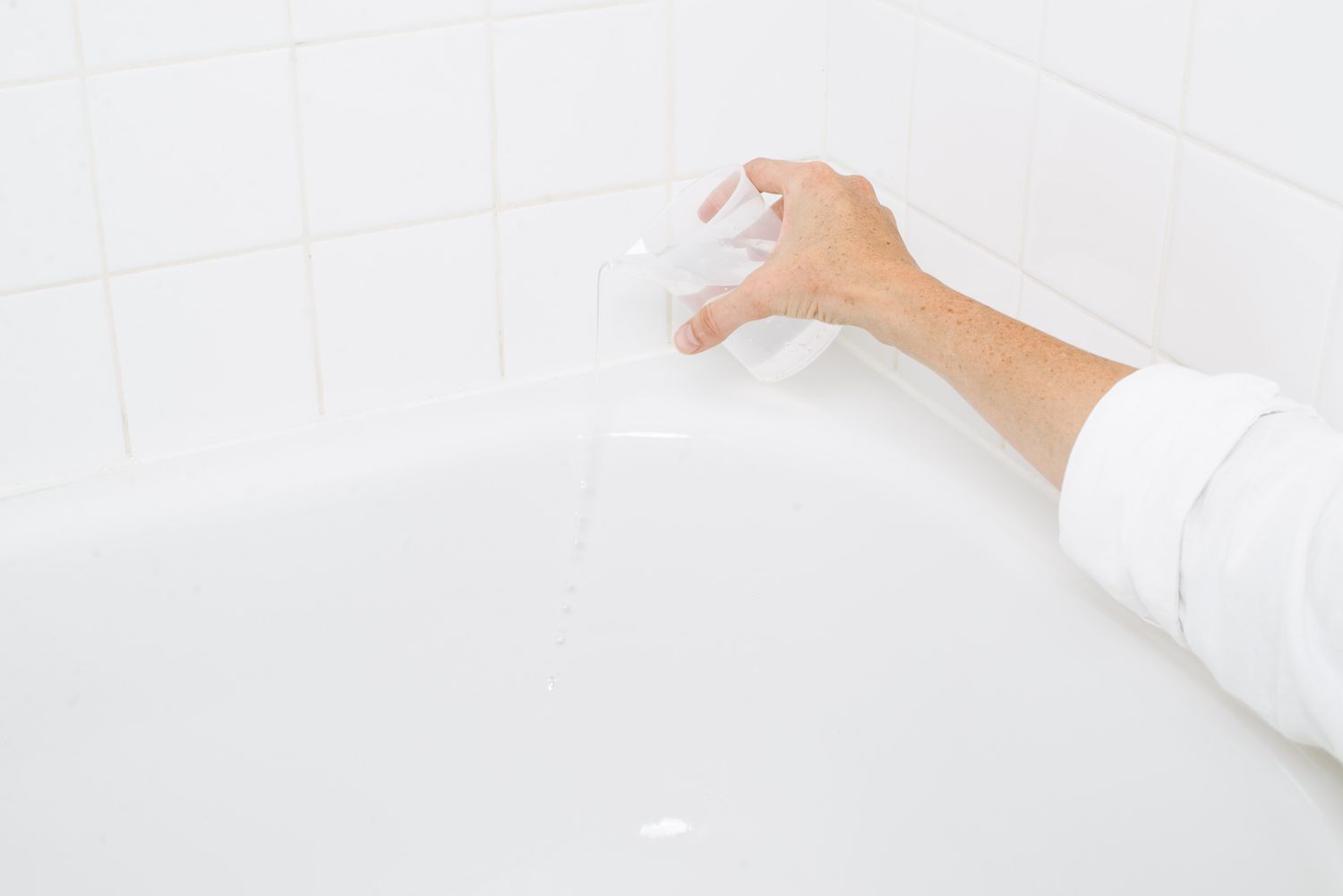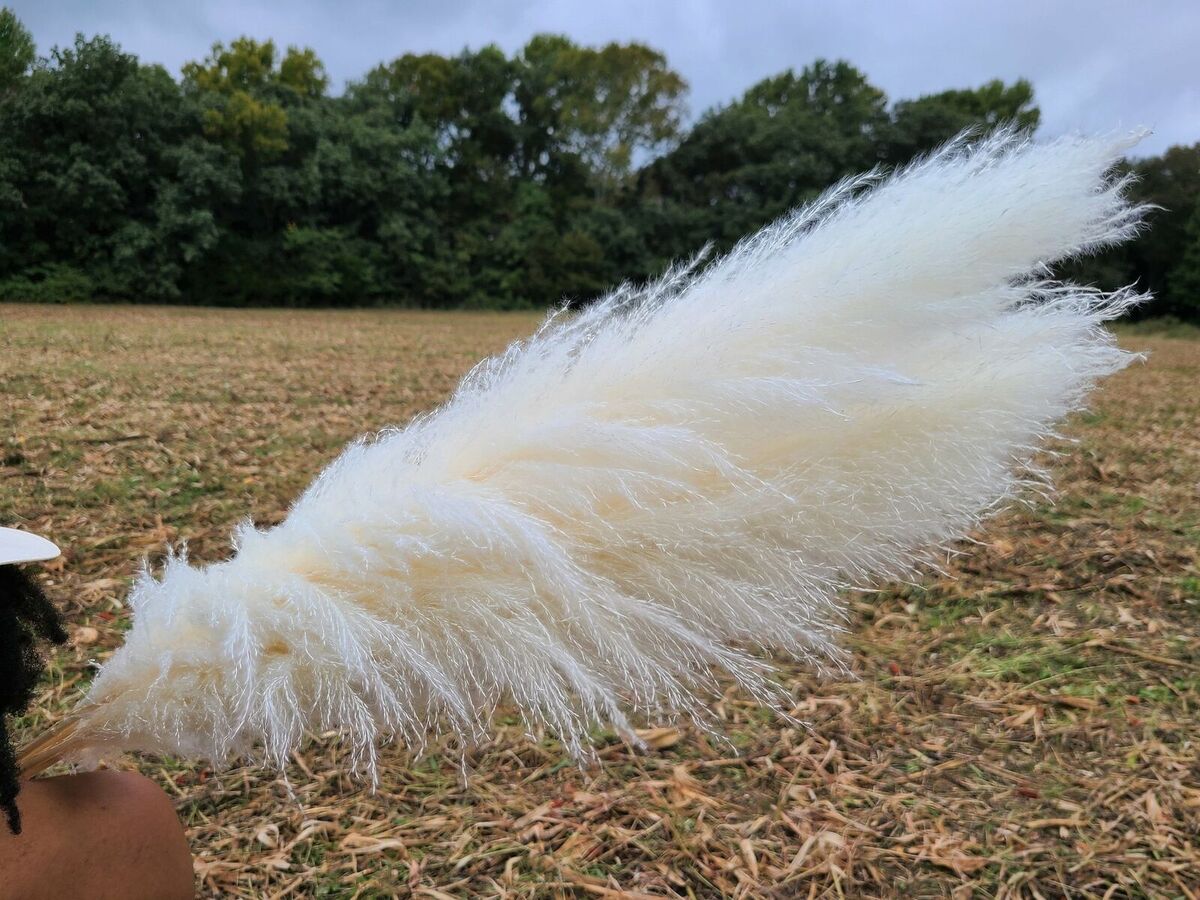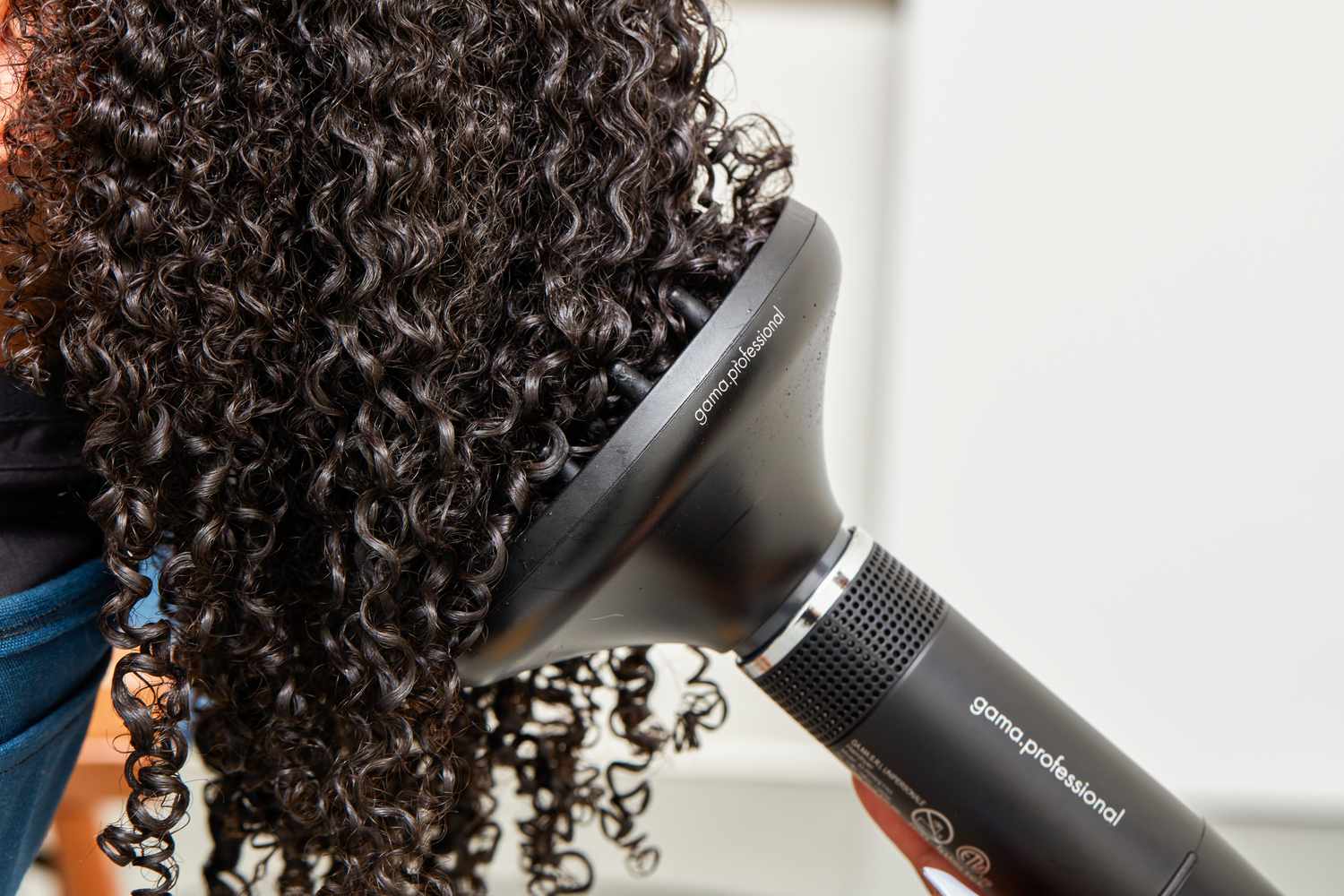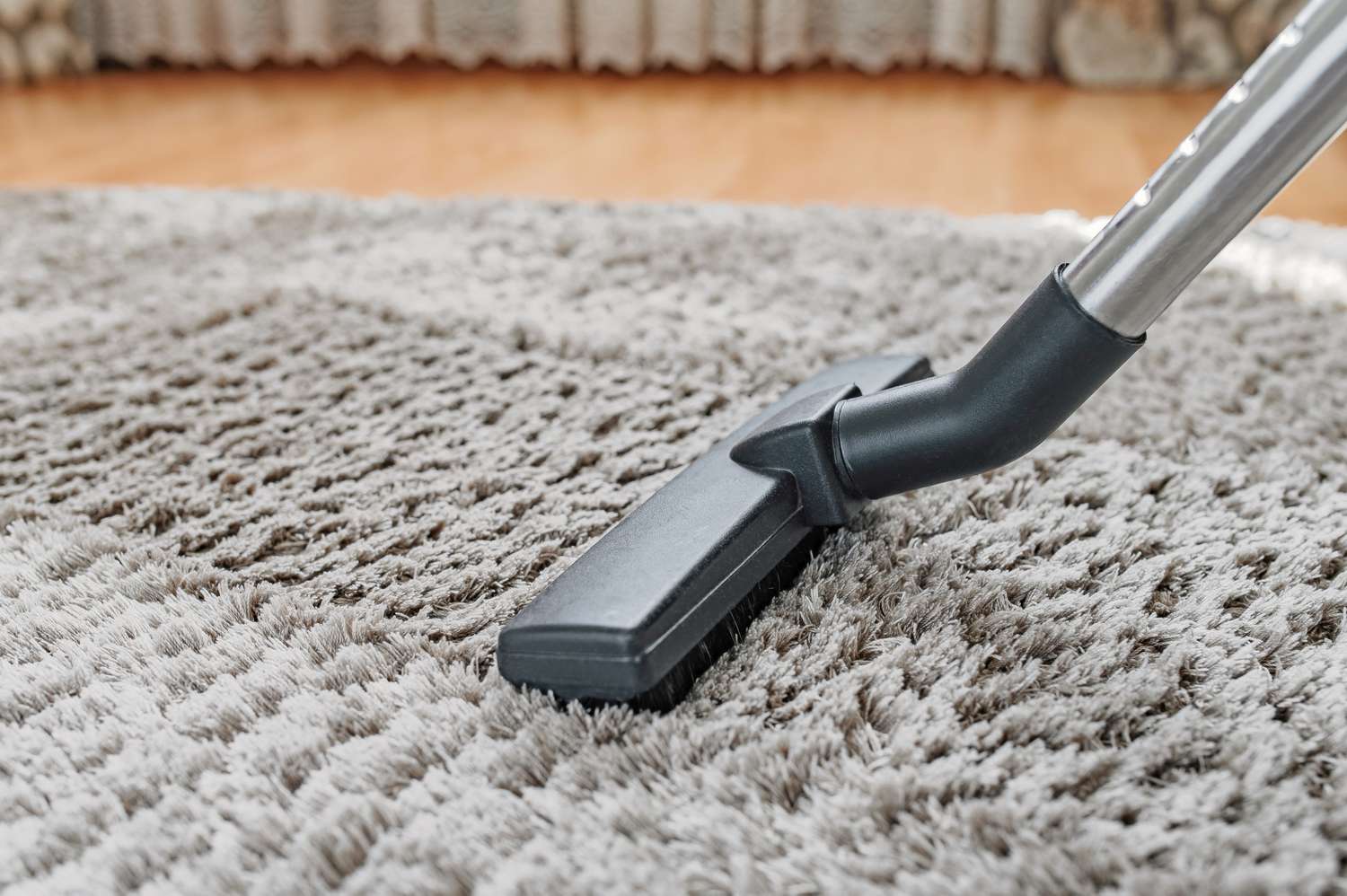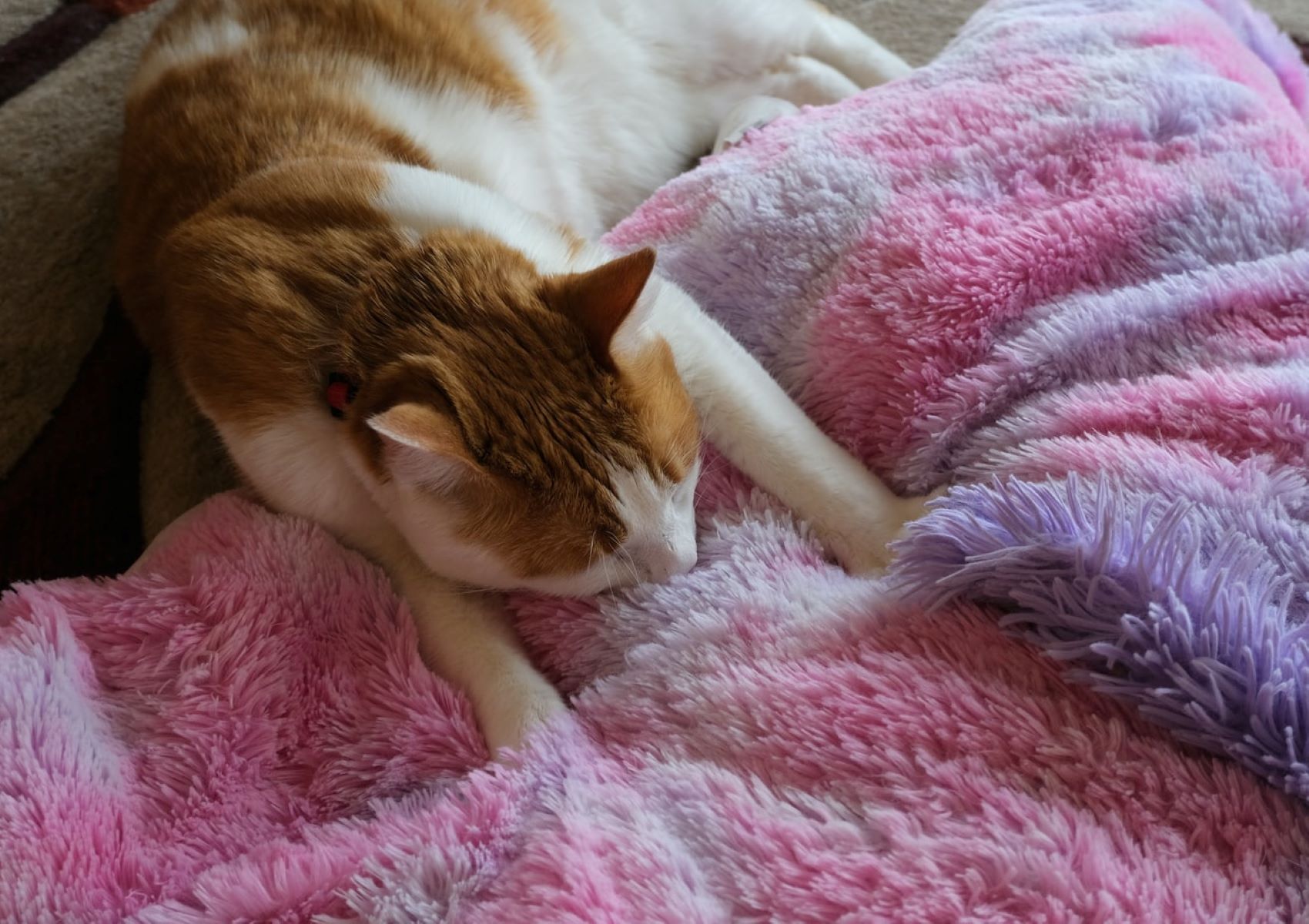

Articles
How To Make Your Blanket Fluffy Again
Modified: February 19, 2024
Revive the fluffiness of your blanket with these helpful articles. Discover easy tips and tricks to make your favorite blanket cozy and soft again.
(Many of the links in this article redirect to a specific reviewed product. Your purchase of these products through affiliate links helps to generate commission for Storables.com, at no extra cost. Learn more)
Introduction
There’s nothing quite as cozy as wrapping yourself up in a soft, fluffy blanket during a chilly evening. However, over time, even the fluffiest of blankets can lose their loft and become flat and limp. Fortunately, there are several methods to revive your blanket and make it fluffy again, restoring its warmth and comfort.
In this article, we’ll explore the causes of flatness in blankets, how to assess the material and quality of your blanket, and various techniques to bring back its fluffiness. Whether your blanket is made of fleece, cotton, or any other material, these tips will help you transform it into a voluminous cloud of warmth.
So, if you’re ready to give your blanket a new lease on life, let’s dive into the world of fluffiness restoration!
Key Takeaways:
- Revive your flat blanket by understanding causes of flatness, assessing material and quality, and using washing, drying, and fabric softening techniques. Maintain fluffiness with proper storage and occasional refreshing in the dryer.
- Bring life back to your blanket with hand techniques, dryer balls, and brushing methods. Keep it fluffy by minimizing heavy use, occasional airing, and following care instructions.
Read more: How To Make Sherpa Blanket Fluffy Again
Understanding the Causes of Flatness in Blankets
Before we delve into the ways to make your blanket fluffy again, it’s important to understand the factors that contribute to its flatness. Over time, blankets may lose their fluffiness due to a combination of factors, including:
- Compressed Fibers: Regular use and handling of blankets can cause the fibers to become compacted, reducing their volume and loft.
- Aging: As blankets age, the natural wear and tear can lead to decreased fluffiness. The fibers may become weak and lose their ability to regain their original loft.
- Poor Quality: Blankets of inferior quality often suffer from flatness. These blankets may have low-quality fibers or inadequate filling, leading to a diminished level of fluffiness.
- Incorrect Washing and Drying: Improper washing and drying techniques can affect the fluffiness of your blanket. Excessive agitation, high heat, or using harsh detergents can cause the fibers to clump together and lose their plushness.
By understanding these causes, you can address them directly and take appropriate steps to revive the fluffy texture of your blanket.
Now that we’ve examined the causes of flatness in blankets, let’s move on to the next step: assessing the material and quality of your blanket.
Assessing the Material and Quality of the Blanket
Before attempting to restore the fluffiness of your blanket, it’s essential to assess its material and quality. This step will help you determine the appropriate methods to use and prevent any potential damage. Here are some factors to consider:
1. Material: Different materials require different care techniques. For example, fleece blankets may respond well to machine washing and drying, while delicate fabrics like silk or cashmere might require more gentle treatment. Check the label or manufacturer’s instructions for specific care recommendations.
2. Thickness and Density: Thicker blankets with a higher density usually have more loft and are easier to fluff. Assess the thickness and density of your blanket to determine how much effort may be required to restore its fluffiness.
3. Quality of Fill: If your blanket contains fill material, such as down or synthetic fibers, examine its quality. High-quality fill will have better loft retention and resilience, making it easier to revive the fluffiness.
4. Stitching and Construction: Inspect the stitching and overall construction of the blanket. If there are any loose threads or holes, consider repairing them before attempting to restore the fluffiness.
By assessing the material and quality of your blanket, you can tailor your approach and choose the most appropriate techniques to bring back its fluffiness. Now, let’s move on to exploring the various washing and drying techniques that will help revive your blanket’s plushness.
Washing and Drying Techniques for Fluffy Blankets
Proper washing and drying techniques play a crucial role in maintaining the fluffiness of your blankets. Here are some tips to help you restore their plushness:
1. Read the Care Instructions: Before washing your blanket, check the care label for any specific instructions. Some blankets may require gentle or hand washing, while others may be suitable for machine washing.
2. Choose a Gentle Detergent: Opt for a mild and gentle detergent, preferably one that is specifically formulated for delicate fabrics. Harsh detergents can strip away the natural oils in the fibers, causing them to lose their fluffiness.
3. Use a Large Washing Machine: If your blanket is bulky or oversized, consider using a larger capacity washing machine. This will allow the blanket to move freely during the washing process and prevent excessive agitation.
4. Select the Right Water Temperature: Most blankets can be washed in cold or warm water, depending on the care label instructions. Hot water can cause shrinkage and damage certain fabrics, so it’s best to avoid it unless specifically recommended.
5. Avoid Fabric Softener: While fabric softener can make your clothes feel softer, it can also leave a residue on the fibers of your blanket, reducing its fluffiness. Instead, consider using vinegar as a natural fabric softener alternative.
6. Air-dry or Low Heat: After washing, choose the appropriate drying method. Air-drying your blanket can be the gentlest option, allowing it to regain its fluffiness naturally. If you prefer using a dryer, set it to a low heat or delicate cycle to avoid damaging the fibers.
7. Shake and Fluff: Once your blanket is dry, give it a good shake to loosen the fibers. Fluff it up by gently pulling and tugging on the corners and edges. This will help redistribute the loft and restore its fluffy appearance.
By following these washing and drying techniques, you can effectively clean your blanket and restore its softness and fluffiness. In the next section, we’ll explore additional methods to enhance the fluffiness using fabric softeners and hand techniques.
Utilizing Fabric Softeners and Conditioners
Fabric softeners and conditioners can be effective in enhancing the fluffiness of your blankets. These products help to relax the fibers, reduce static cling, and restore softness. Here’s how you can use them:
1. Liquid Fabric Softener: Add a small amount of liquid fabric softener to the washer’s fabric softener dispenser during the rinse cycle. The softener will coat the fibers, making them feel softer and more voluminous.
2. Dryer Sheets: Place a dryer sheet in the dryer along with your blanket. As it tumbles, the heat activates the fabric softening agents on the sheet, which transfers onto the fibers, giving them a fluffy and soft feeling.
3. Fabric Conditioner: Consider using a fabric conditioner specifically designed for blankets or fluffy fabrics. These products are formulated to restore softness and improve the loft of the fibers, resulting in a fluffier blanket.
4. Downy Balls: Downy Balls can be a convenient way to add fabric softener or conditioner to your washer. Simply fill the ball with the recommended amount of product and place it on top of your blanket before starting the wash cycle.
5. Dryer Balls: Dryer balls are an eco-friendly alternative to fabric softeners. They help to fluff up the fibers by creating space between them during the drying process. Add a few dryer balls to the dryer along with your blanket for improved fluffiness.
6. Natural Alternatives: If you prefer using natural alternatives, try adding half a cup of white vinegar during the rinse cycle. Vinegar helps to remove detergent residue, softens the fibers, and makes your blanket fluffier.
Remember to always follow the instructions provided by the fabric softener or conditioner manufacturer for best results. Now, let’s move on to hand techniques you can use to fluff up your blanket.
To make your blanket fluffy again, try adding a couple of tennis balls to the dryer when you’re drying it. The balls will help fluff up the blanket as they bounce around.
Read more: How To Make Pillows Fluffy Again
Hand Techniques to Fluff Up Your Blanket
If you prefer a more hands-on approach, there are several techniques you can use to manually fluff up your blanket. These methods work well for blankets made of various materials, including fleece, cotton, and knit. Here’s how you can bring back the fluffiness using your hands:
1. Shake It Out: Take your blanket outside and give it a good shake. Vigorously shake it up and down to help loosen the fibers and restore their natural loft. This simple technique can instantly revitalize the fluffiness of your blanket.
2. Tug and Pull: Grab each corner of your blanket and gently tug and pull on it. This action will help straighten out the fibers, increase their volume, and promote a fluffy appearance. Repeat this process along the edges of the blanket as well.
3. Brushing: Use a soft-bristled brush or a lint roller to gently brush the surface of your blanket. Brushing helps to remove any trapped debris or flattened fibers, allowing the natural loft to be restored. Brush in the direction of the fibers for the best results.
4. Fluffing with Your Hands: Use your hands to pat and fluff up the surface of the blanket. Starting from the center, work your way outward, using gentle circular motions to lift the fibers. This technique helps to create volume and restores the fluffiness of the blanket.
5. Hang and Beat: Hang your blanket outside on a clothesline or over a sturdy railing. Use a clean broom or a paddle to gently beat the surface of the blanket. This action helps to loosen compacted fibers and restore the loft, making your blanket fluffy again.
6. Steam Treatment: If your blanket is made of a fabric that can withstand steam, try using a handheld steamer. Passing the steamer over the blanket will release wrinkles and plump up the fibers, resulting in a fluffier appearance.
Remember to be gentle when using these hand techniques to avoid damaging the fabric or causing excessive wear. Now, let’s move on to other methods involving the use of a dryer to restore your blanket’s fluffiness.
Using a Dryer with Tennis Balls or Dryer Balls
A dryer can be a powerful tool in restoring the fluffiness of your blanket. By adding tennis balls or dedicated dryer balls to the tumble dry process, you can help revive the loft of the fibers. Here’s how:
1. Tennis Balls: Place a few clean tennis balls in the dryer with your blanket. As the dryer tumbles, the tennis balls help to agitate the fibers, creating space between them. This action promotes better airflow and plumps up the blanket, resulting in increased fluffiness.
2. Dryer Balls: Dryer balls are specifically designed to enhance the drying process and improve the fluffiness of fabrics. They work by physically separating and lifting the fibers, increasing air circulation and reducing drying time. Follow the manufacturer’s instructions on the number of balls to use.
3. Wool Dryer Balls: Consider using wool dryer balls instead of tennis balls or plastic dryer balls. Wool balls are natural, hypoallergenic, and gentle on fabrics. They help to soften and fluff your blanket without the use of chemicals.
4. Add a Clean Shoe: If you don’t have tennis balls or dryer balls on hand, you can add a clean canvas shoe or sneaker to the dryer. The shoe will create rhythmic motion and aid in fluffing up the fibers of your blanket.
5. Dry on Low Heat: Use a low heat setting when drying your blanket with tennis balls or dryer balls. High heat can damage certain fabrics and cause shrinkage, so it’s best to play it safe and opt for a gentle drying cycle.
By incorporating tennis balls or dryer balls into your drying process, you can effectively restore the fluffiness of your blanket. Now, let’s explore other techniques involving brushing and shaking your blanket to bring back its cozy texture.
Brushing and Shaking Techniques for Fluffy Blankets
Brushing and shaking are simple yet effective techniques to bring back the fluffiness of your blankets. These methods work well for a variety of blanket materials and can help to separate the fibers and restore their natural loft. Here’s how to do it:
1. Brushing: Use a soft-bristled brush or a lint roller to gently brush the surface of your blanket. Start from one corner and brush in long, sweeping motions. This action helps to remove any trapped debris, dust, or flattened fibers, allowing the blanket’s natural fluffiness to be restored.
2. Shaking: Find an open space, preferably outdoors, and give your blanket a vigorous shake. Hold onto one corner and flick your wrist to create momentum. This action helps to loosen compacted fibers and allows them to expand, providing a fuller and fluffier appearance.
3. The Blanket Roll: Roll your blanket tightly from one end to the other, incorporating the entire length. Then, with a firm grip on each end, give the rolled blanket a few swift shakes. This technique helps to shake out any dust or debris and reposition the fibers for increased fluffiness.
4. Hang and Beat: Hang your blanket outside on a clothesline or over a sturdy railing. Use a clean broom, paddle, or even your hands to gently beat the surface of the blanket. This beating action helps to dislodge compacted fibers and restore the natural loft, making your blanket fluffy once again.
5. Air Shake: If you’re unable to go outside or hang your blanket, you can achieve a similar effect indoors. Hold one end of the blanket and vigorously shake it in the air, allowing the movement to flow through the entire blanket. This action helps to separate the fibers and increase the fluffiness.
Remember to be gentle when brushing and shaking your blanket to avoid damaging the fabric. These techniques are particularly useful for faux fur, fleece, and knit blankets. By incorporating these methods, you can effectively revive the fluffiness of your blanket. Now, let’s move on to maintaining the fluffiness once you’ve achieved it.
Maintaining the Fluffiness of Your Blanket
Once you have successfully restored the fluffiness of your blanket, it’s important to implement some practices to maintain its plushness in the long run. By following these tips, you can prolong the life and fluffy texture of your blanket:
1. Store Properly: When not in use, store your blanket in a dry and well-ventilated area. Avoid compressing it in a tight space, as this can flatten the fibers. Instead, fold or roll the blanket loosely to preserve its volume.
2. Avoid Heavily Used Areas: If possible, try to minimize the use of your fluffy blanket in high-traffic areas or places where it might get heavily soiled. Regular use can contribute to compression and make it more challenging to maintain the fluffiness over time.
3. Air Out Occasionally: Give your blanket some time to breathe by airing it out once in a while. Hang it outdoors on a clothesline or drape it over a railing for a few hours. This allows for fresh air circulation and helps to revitalize the fibers.
4. Spot Clean When Needed: Deal with any spills or stains on your blanket promptly. Use a gentle stain remover or spot cleaner that is appropriate for the fabric. Avoid rubbing aggressively, as this can mat down the fibers. Blot gently with a clean cloth or sponge instead.
5. Follow Care Instructions: Always refer to the care label or manufacturer’s instructions for specific cleaning and maintenance guidelines. Different materials may require different care methods, so it’s essential to follow the recommended procedures to maintain the fluffiness of your blanket effectively.
6. Refresh with Dryer: Periodically place your blanket in the dryer on a low heat setting, along with a few dryer balls or clean tennis balls, to refresh its fluffiness. Tumbling in the dryer helps to redistribute the fibers and restore their volume.
7. Regularly Fluff: Take a few minutes every now and then to give your blanket a gentle shake or fluff. This helps to reposition the fibers and maintain the plushness. You can also lightly brush the surface with a soft-bristled brush to keep it looking fluffy and inviting.
By incorporating these maintenance practices, you can keep your blanket fluffy and cozy for a long time to come. Now, let’s wrap up everything we’ve learned.
Read more: How To Make A Blanket Soft Again
Conclusion
Blankets are meant to provide warmth and comfort, but over time, they can lose their fluffiness and become flat and limp. Luckily, there are various methods to revive the fluffiness of your blanket and restore its cozy appeal.
Understanding the causes of flatness in blankets, such as compressed fibers, aging, poor quality, and incorrect washing techniques, is key to effectively addressing the issue. Assessing the material and quality of your blanket helps you determine the best approaches for restoration.
Washing and drying techniques play a central role in maintaining the fluffiness of your blanket. By using gentle detergents, appropriate water temperature, and choosing the right drying method, you can prevent further damage and promote loftiness. Utilizing fabric softeners, conditioners, and dryer balls adds an extra boost to the fluffiness restoration process.
Hand techniques like shaking, brushing, and rolling help to separate the fibers, increase air circulation, and enhance the fluffiness. Using a dryer with tennis balls or dryer balls aids in redistributing the fibers and reviving the blanket’s plushness.
To maintain the fluffiness of your blanket, proper storage, minimizing heavy use, occasional airing, spot cleaning, and following care instructions are crucial. Regularly refreshing your blanket in the dryer and giving it a gentle fluff helps in sustaining its cozy texture.
In conclusion, with a little care and attention, you can bring your flat and lifeless blanket back to life. Explore the techniques mentioned in this article, assess the needs of your specific blanket, and enjoy the renewed warmth and comfort of a fluffy blanket once again.
So, embrace the fluffiness and snuggle up in your blanket, knowing that you have the knowledge and techniques to keep it cozy for years to come.
Frequently Asked Questions about How To Make Your Blanket Fluffy Again
Was this page helpful?
At Storables.com, we guarantee accurate and reliable information. Our content, validated by Expert Board Contributors, is crafted following stringent Editorial Policies. We're committed to providing you with well-researched, expert-backed insights for all your informational needs.
